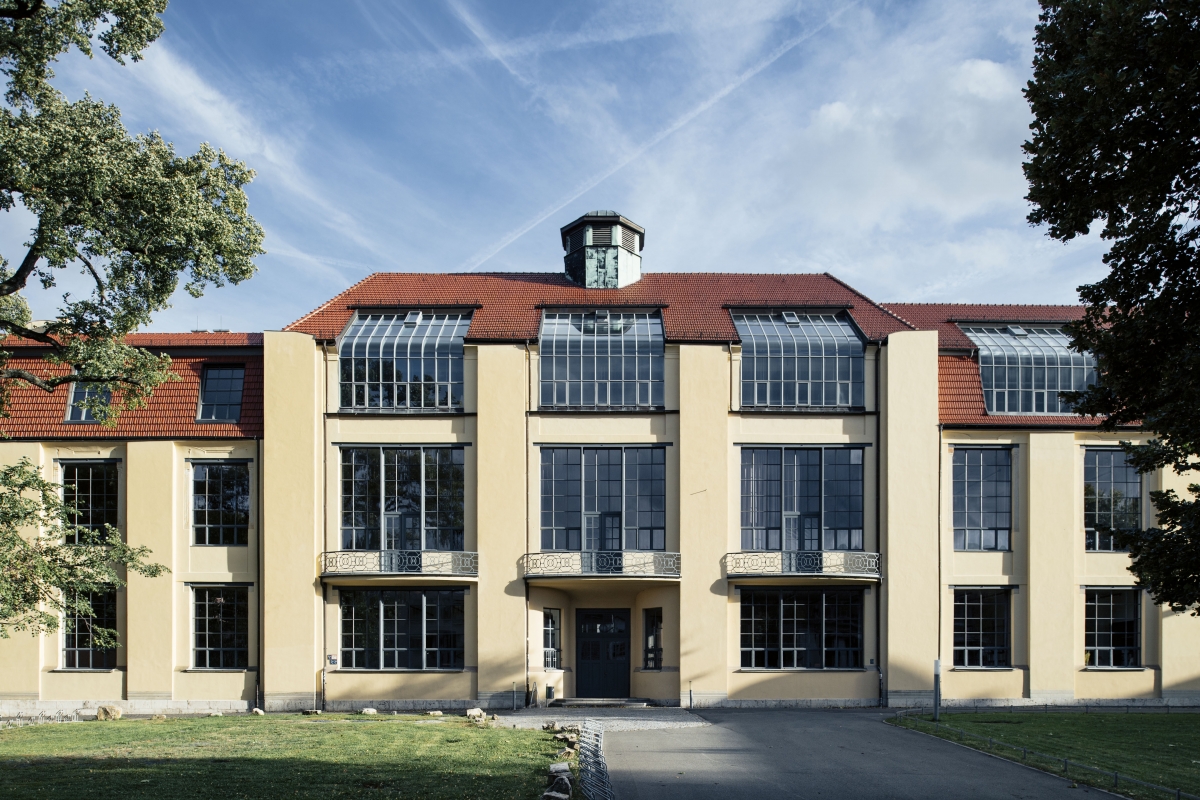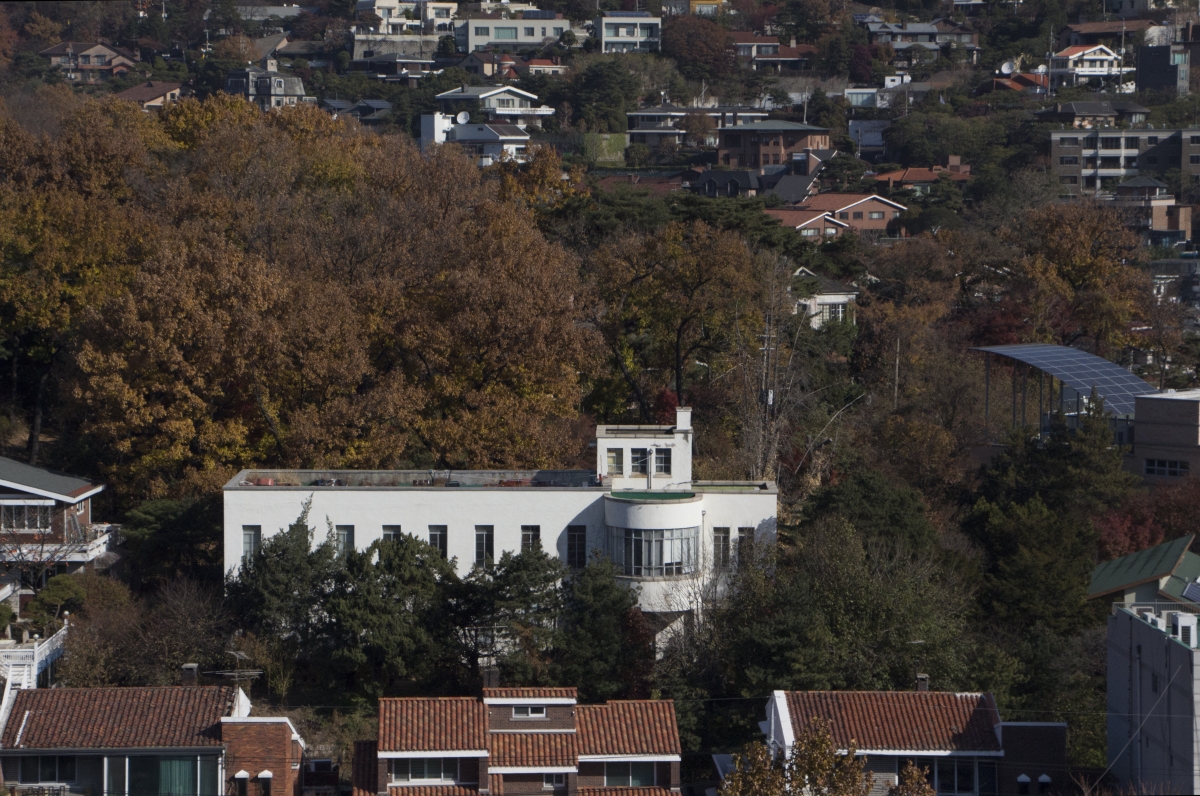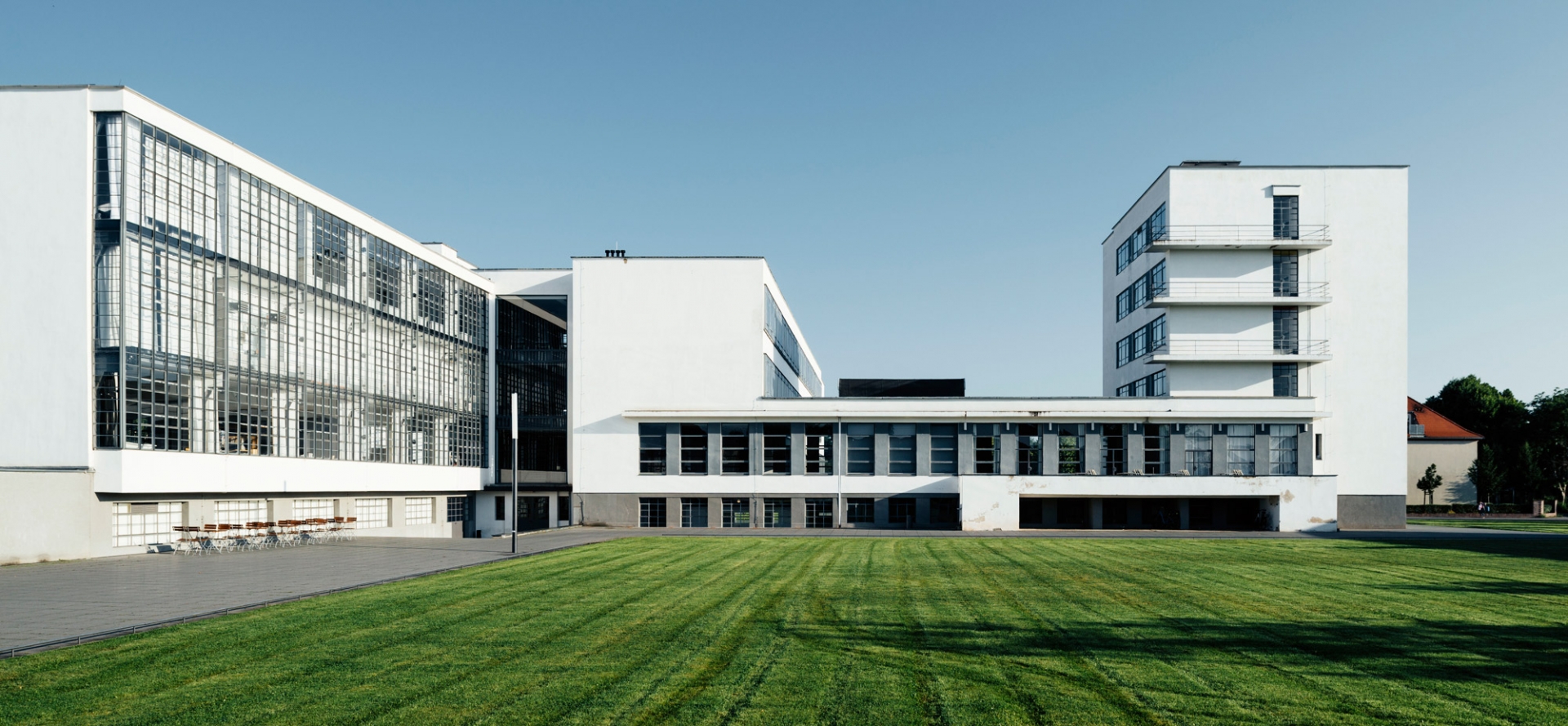The year 2019 marks the 100th anniversary of the Bauhaus, and various commemorative efforts are gaining traction across the globe. Korea’s modern architecture owes a lot to the school, but the craze for Bauhaus isn’t that high. This is because Korea’s relation with the Bauhaus is indirect. On the 12th of April, 1919, when the Bauhaus emerged as a result of the integration of Weimar Academy of Fine Art and Weimar Saxon Grand Ducal Art School, Korea was under Japanese colonial rule. At that time, Gyeongseong Engineering College – established in 1916, the only higher education in the country by 1940s – had just produced Korean graduates. The Bauhaus’ performance mostly flowed through Japanese magazines. In the 1930s, Korean architects Park Kilyong and Yi Sang were partially quoting the Bauhaus but failed to grasp its essential meaning. In 1933, when Bauhaus was forced to close under pressure exerted by the Nazis, meaning that direct exchanges with Korean architecture had become impossible. Nevertheless, its ideology survives and can be encountered in architecture produced in South and North Korea since the 1950s. This article covers the Bauhaus: its political ideology, its spread to East Asia and across the Korean Peninsula, and its legacy in the South.
Political Issues
During its establishment and development, the Bauhaus had been dogged by political issues. The school’s lifespan (its opening in 1919 and closing in 1933) is almost identical to that of the Weimar Republic (1918 – 1933), suggesting that the school was hardly free from political pressures. Since the Bauhaus began as a public school, financial support from the local government was essential for its management; however, it varied depending on the political orientation of local councils. Its move from Weimar to Dessau and Berlin was the result of political relations between local governments and opinions of residents. Right after its establishment in Weimar, the school began to draw criticism from conservative nationalists. Critics mainly rebelled against the internationalist attitude of Bauhaus education: it was neither traditional nor more German. The school’s activities aroused uncomfortable feelings amongst the public because they were not familiar, a fact upon which opponents focused.▼1 Artists trained in a more conventional way joined this criticism and backlash. In this way, Bauhaus’s activities have continuously raised political issues. Equally responsible were the personal inclinations of its faculty and students.
By the time the Bauhaus was founded, the European avant-garde upheld mostly socialist tendencies. While this trend emerged before World War I, the success of the Russian Revolution in 1917 meant that a socialist orientation became even stronger. At that time in Germany, the ideas that penetrated main avantgarde movements – the Arbeitsrat für Kunst (Workers Council for Art), the Glass Chain and the Der Ring – are summed up in two ways: socialist thought and the integration of various arts fields through architecture. The Arbeitsrat fur Kunst, founded by Bruno Taut and Walter Gropius, illustrates these characteristics. They argued that ‘art shall no longer be a luxury of the few but should be enjoyed and experienced by the broad masses’, and the manifesto of the movement read ‘Exalt a socialist art that would be the business of the entire people’. Gropius was initially not interested in politics, but after the war he pursued radical social reform, making the Bauhaus the most progressive school. Ludwig Mies van der Rohe, who was politically neutral, was also mistaken for a socialist in 1926 when designing the memorial towers with Karl Liebknecht and Rosa Luxemburg. (Both Liebknecht and Luxemburg were radical leaders of the German Communist Party and were the main culprits behind the Spartacist uprising in 1919.) The Bauhaus’ faculty wanted to remain politically neutral at school, despite their inclinations. After the closure of the school, Mies Van der Rohe visited Alfred Rosenberg, the then culture minister, and said, ‘The Bauhaus has a certain idea, but this idea has nothing to do with politics’.▼2 However, it didn’t look like that from the outside. In particular, during the period from 1928 to 1930 when Hannes Meyer served as principal, the Bauhaus made its political colours clear. According to the art critic Frank Whitford, Meyer found ‘the only doctrine in Marxism that could understand and solve the problems of the modern world. Under this belief, a political science course was opened in Bauhaus, and political debate was encouraged. A Communist cell system was formed, and joined by 15 students, 10 per cent of the whole school. This kept spreading rumours to the media by the opponents that Bauhaus was the hotbed of Bolshevik’.▼3
The Bauhaus was eventually closed in 1933 by the Nazis. The faculty and students fled overseas: the first principal Walter Gropius passed through Britain and finally settled at Harvard University in the U.S. Marcel Breuer, one of the first Bauhaus graduates, joined him; the third principal Mies Van der Rohe was appointed a Professor of Illinois Institute of Technology (IIT) in Chicago, while, former professors of Bauhaus, Ludwig Hilberseimer and Walter Peterhans also joined the university’s faculty. Mies Van der Rohe reflected his Bauhaus ideology at the IIT in 1938 when he reorganized its curriculum; Laszlo Moholy-Nagy also moved to Chicago in 1937, where he built a New Bauhaus and became principal. As principal faculty members move to the U.S. to continue their education and work, the Bauhaus' ideology is settled in the U.S. After World War II, the Bauhaus ideology spread globally as the U.S. was reborn as the world’s most potent powerhouse. That is why the history of the Bauhaus has been described around the faculty who have defected to the United States.

Bauhaus building in Weimar ⓒT.Franzen
The Socialist Architects
However, there are hidden characters in this kind of history. They escaped from Nazi Germany and moved to the Soviet Union. Hannes Meyer, the second principal of the Bauhaus, is one such example. German architects such as Bruno Tout and Ernst May also crossed into the Soviet Union. They sympathised with socialist ideologies after the Russian Revolution and sought to realise their ideas in a socialist country to avoid persecution by the Nazis. That point is evident in an interview Meyer made shortly after he was ousted as the principal from the Bauhaus in 1930. ‘I am going to work in the USSR where a truly proletarian culture is being hammered out, where socialism originates and where the society exists for which we have fought here under capitalism’.▼4
However, their choice was not successful. Their activities in the Soviet Union are overshadowed by history. After Stalin’s rule, most of them left the Soviet Union and decided on their destination as a third country: Bruno Taut failed to overcome the harsh political environment of 1933 and left the Soviet Union before staying in Japan and finally settling in Turkey; Ernst May moved to Kenya, Africa in 1933; Hannes Meyer remained in the Soviet Union longer than any other architect. In the early days of Soviet settlement, he joined a group called VOPRA (All-Union Association of Proletarian Architects) and inquired into how to interpret architecture as Marxism, and established 13 Marxist architectural principles. However, when the Soviet government adopted socialist realism as its leading principle in 1932, Meyer no longer performed architectural design work and turned to urban planning. However, with the reintroduction of the traditional baroque method into this field, it is no longer easy to express his thoughts. On top of that, with colleagues around him arrested and deported, Meyer returned to Switzerland in 1936 and moved to Mexico for an extended stay.
The post-war influence of German architects, who went to the Soviet Union after the Bauhaus was dismantled, is insignificant compared to Gropius and Mies van der Rohe. This should take the following fact into account: Liberal countries, including the United States, rarely exchanged information with the Soviet Union during the Cold War. As a result, it was almost impossible to identify their activities in the Soviet Union. As Dessau and Weimar belonged to the East Germany in the post-war era, access to the Bauhaus archive was blocked from the West until Germany was unified. It has changed since the fall of the Soviet Union and the fall of the Berlin Wall, and the release of previously unavailable data about the so-called ‘the Bauhaus Left’ has led to a gradual reassessment of their activities.
The Spread of Ideology Across East Asia
Although Bauhaus was officially closed on the 10th of August, 1933, its ideology spread around the world. In East Asia, Japan was the first to open the channel with Bauhaus. In particular, the leading architects of Japan’s secessionist group, Bunriha, moved to Germany after graduating from college and were directly influenced by the Bauhaus. The Bunriha movement was Japan’s first modern architecture movement, emerging in 1920 with six students graduating from the Department of Architecture at the University of Tokyo: the leading member, Kikuji Isimoto (1894 – 1963), was the first Japanese architect to learn from Gropius in 1922; Sutemi Horiguchi (1895 – 1984) stayed in Europe for two years from 1924, interacted with German architects, and visited Bauhaus himself in 1923; Mamoru Yamada (1894 – 1966) travelled to Germany to meet Gropius in the late 1920s and also attended the second CIAM (Congrès Internationaux d’Architecture Moderne) conference in Frankfurt in 1929.
As young Japanese architects expanding their contact with modern architecture, the various information about the Bauhaus trickled into Japan. At that time, Japanese architectural magazines began to deal with Bauhaus as important. Shinkenchiku introduced the architecture of Walter Gropius and Hannes Meyer twice, in August 1927 and December 1928. This atmosphere led Japanese students to head to Germany.▼5 Contact between Japanese architects and Bauhaus continued into the 1930s. Yamawaki Iwao (1898 – 1987) studied architecture at Tokyo University of the Arts and was engaged in practice for a while, then moved to Germany and studied at Bauhaus in Dessau from 1930 to 1932, learned photography from Walter Peterhans. His photomontage, Der Schlag gegen das Bauhaus, is often cited in several books as a way of conveying the political plight of Bauhaus at the time.
An interesting fact is that the Bauhaus ideology flowed through Japanese architects into colonial Korea at that time. Chikatada Kurata (1895 – 1966), a former member of Bunriha, formed Keiji-kobo (which literally means, Ideal Form Atelier) in 1928 with students of the Tokyo High School of Industrial Arts to launch a new craft movement. The group initially conducted the design activities trained upon the overall interior with a propensity for total art (Gesamtkunstwerk), but after Kurata moved to Europe from 1930 to 1931 and returned home from learning modern architecture from Gropius, the group was actively conscious of the rationalisation of productivity and economy, and targeted for standardizing interior crafts and implementing mass production.▼6

Bowhagak, designed by Park Kilyong ⓒJung Inha
Park Kilyong, an architect representative of the Korean architectural community in the 1930s, cites Kurada in his article, ‘Modern and Architecture-Specialised Architectural Science’, which was published in the Dong-A Ilbo on the 29th of July, 1936: ‘Architecture is understood to mean the a world view of architecture and to determine the standard of value. Modern architecture should not be a deductive approach to maintaining a pre-experimental law, but an inductive and empirical approach to seeking the essence and beauty contained in individual works’. In this sense, he thought modern architecture was different from the past. In other words, ‘the architecture of the past was handled in the realm of formative arts, but in modern times it is significant as an engineering product’. Park then introduces some of it, suggesting that the architectural theory of Kurata influenced the idea.▼7 In Park’s apprehension, Kurata’s architectural approach is somewhat distant from what he thinks, but it is the mainstream of modern architecture. Here, mainstream modern architecture, which Park pointed to, is believed to refer to the Bauhaus. Based on this notion, he designed the Bowhagak (Gansong Museum), which imitates the architectural forms of the Bauhaus.
The influence of the Bauhaus is also found in the poems of poet Yi Sang. In his poem ‘Anxiety and Generous, Decoration, Arts’, the names of the former professor of the Bauhaus, Moholy-Nagy, is mentioned. The poem shows that Yi read a Japanese translation of an essay of Moholi-Nagi, ‘Constructivism and the Proletariat (Konstruktivismus und Proletariat)’ in the magazine M.
Besides Korea and Japan, the Bauhaus also had a significant impact on China’s modern architecture. Bauhaus ideology flowed into China through the Saint John’s University in Shanghai, founded in 1879 by an American missionary. The Chinese architect Huang Zuoshen graduated from AA School of Architecture in Britain, studied at Harvard University, where Gropius was the dean, and subsequently returned to China. In 1942, Huang took on the task of opening a department of architecture at St. John’s University. He invited Richard Paulick (1903 – 1979) as a professor and introduced a Bauhaus-style teaching method. Paulick was a German architect who learned architecture from Hans Poelzig at the Technical University of Berlin (Technische Universitat Berlin) after six months of study at Dessau Bauhaus. After graduating in 1927, he entered the Gropius’ office and participated in the design of the Masters’ Houses in Dessau. Paulick thought of himself as a true communist. After the Nazis came to power, he was attacked by Sturmabteilung (Stormtrooper) and decided to escape from Germany. However, it was turned out that his destination was Shanghai, China, where he had a college friend, not the Soviet Union. Arriving in Shanghai in 1933, he ran a company called Modern Homes with his brother, covering architecture, interior design and stage design. The spirit of the Bauhaus emerges in these works.▼8 Even when he became a professor at Saint John’s University, he taught students mainly in the Bauhaus style. Later, the university was absorbed into Tongji University, making a significant contribution to the development of modern Chinese architecture.
Traces of the Bauhaus in the Korean Peninsula
After the Korean War entered a truce, the Bauhaus returned to the Korean Peninsula. The contact with Bauhaus went in two directions. The first contact was made when Kim Jong-sung entered IIT in 1956. At the time, Mies Van der Rohe and Hilberseimer were professors. The curriculum they set up at the university reflected the Bauhaus ideology, which led Kim Jong-sung to grow into an architect. Kim worked in Mies van der Rohe’s office until 1972 and was since been appointed as a professor at IIT. Then he returned to Korea in 1978 and left various projects behind.The second was as architects of East Germany visited Hamhung for the post-war reconstruction of North Korea. In 1954, the East German government dispatched 188 technicians to North Korea to help restore Hamhung, which was destroyed during the war. These experts included several architects. One of them was Konrad Püschel (1907 – 1997), a student of Hannes Meyer, who was in charge of the urban planning and complex planning in Hamhung. Currently, the Bauhaus-style residential complexes and structures designed by East German architects remain in the city, offering a glimpse of their activities. In particular, his drawings of Hamhung urban planning left in the Bauhaus archive illustrate how the Bauhaus ideology was applied to the socialist city plan. However, since Kim Jong Ill’s emergence in the mid- 1970s, the Bauhaus ideology disappeared in North Korea.
In South Korea, the influence of the Bauhaus continued even after the 1970s, and mainly American college-educated students fostered its continued relevance. After returning home, they led the construction policy in line with the military regime’s economic development, and the Bauhaus ideology was adopted as an essential principle to carry out large-scale construction projects.
1. Justus H. Ulbricht, ‘Un-German activities, attacks from the right, 1919 – 1933’ in Bauhaus conflicts, 1919 – 2009, ed. Philipp Oswalt (Hatje Cantz, 2009), p. 18.
2. Tom Dyckhoff, ‘Mies and the Nazis’, in the Guardian, 30 Nov. 2002.
3. Frank Whitford, Bauhaus, trans. Dae-il Lee (Seoul: Sigongsa, 2000), pp. 190-191.
4. In Sovremennaia architektura, no. 5 (1930), Moscow, (Russian). As cited in Claude Schnaidt, ‘Hannes Meyer, Marxist and modernist (1889-1954)’, in The Charnel-House, https://thecharnelhouse.org/2013/08/10/hannes-meyer
5. Enrique Rojo, Transnational Connections for Architectural Design between Germany and Japan on the Eve of World War II, The ACDHT Journal , No. 2 (2017), p. 23.
6. アンヌ·ゴッソ、敷田弘子, 型而工房の方法論, フランス外務省·国立科学研究センター在外共同研究所 2009, p. 4
7. Park Kilyong wrote Chikatada Kurata as ‘蔵田忠周’, but it appears to have misrepresented ‘蔵田周忠’.
8. 侯丽 · 王宜兵, 『鲍立克在上海: 近代中国大都市的战后规划与重建』 (上海:同济大学出版社, 2016) p. 55.





